#scottishwater
Explore tagged Tumblr posts
Text
Laughs in scottish.
i feel like tumblr doesnt know about the pain and suffering that is english tap water,,,, girl there are stalagmites inside me
139K notes
·
View notes
Text
This is going to be awesome!!! #GSCcuriositylive at GSC is 3 days celebration of talent, research, innovation & creativity with guest specialists from @scottishwater @UofGlasgow @UofGCCE @imperialcollege @rcpsglasgow @univofstandrews http://socsi.in/T8mdE #GlaSciFestpic.twitter.com/zCfu4ZbkWo
This is going to be awesome!!! #GSCcuriositylive at GSC is 3 days celebration of talent, research, innovation & creativity with guest specialists from @scottishwater @UofGlasgow @UofGCCE @imperialcollege @rcpsglasgow @univofstandrews http://socsi.in/T8mdE #GlaSciFestpic.twitter.com/zCfu4ZbkWo
source https://twitter.com/gsc1/status/989441221344092160
View On WordPress
0 notes
Text
And finally… Prehistoric remains found on Scottish Water project in Ayrshire
And finally… Prehistoric remains found on Scottish Water project in Ayrshire #prehistoricremains #scottishwater
Prehistoric remains have been uncovered during work on a £120 million water mains network upgrade between Ayrshire and Glasgow. Archaeologists have discovered the remains of an early Neolithic structure believed to have been built by the earliest farmers in Scotland around 6,000 years ago. The find was made in countryside near Kilmarnock while Scottish Water was working on the multi-million water…
View On WordPress
0 notes
Photo

The CMS Geotech team are currently busy supporting SOCOTEC on a six week ground investigation project for Scottish Water at Portobello Beach in Edinburgh, Scotland. The investigation will help to determine options to improve bathing water quality by determining the geotechnical & chemical properties of the seabed deposits, as well as the underlying superficial soils & bedrock. SOCOTEC have deployed a 215 tonne 18m x 18m modular jack up barge specifically constructed for this project. https://bit.ly/2KWMRn2 #geotech #vibrocore #scottishwater #edinburgh #sediment #sampling
0 notes
Photo

Working for the man. Thatcher.circa 1990 #margretthatcher #margeretthatcher #scottishwater #hadrianswall #hadrian #roman #caricature (at Shaftesbury Avenue)
0 notes
Photo

I believe I agree with you Leotog....on this chilly, wet n foggy evening the Quinta Ruban it is then....you ask her dude she's your Emma!!! #glenmorangie #quintasruban #lasanta #iphone5s #iphoneographysa #worldnomads #Leotog #Lego #legotog #emma #whiskyporn #scotch #scottishwater (at Eagle Rock)
#iphoneographysa#emma#scottishwater#lego#legotog#whiskyporn#quintasruban#scotch#lasanta#glenmorangie#worldnomads#leotog#iphone5s
0 notes
Text
From Georgian Bay and Lake Huron in Ontario to the River Almond
Our Programme Manager, Fiona caught up with #MOT4Rivers PhD Student Bridget Rusk to learn a bit more about her project, including shadowing her in the Microbiology Lab and what motivates Bridget in science. Bridget's PhD research is part of the wider NERC Funded freshwater quality programme, which MOT4Rivers is 1 of 5 projects funded under. Bridget's PhD is co-funded by Scotland's International Environment Centre & Scottish Water.
Join us for an conversation with Bridget (Pictured here with her trusty companion, Dale) where she talks all about science, wet wipes and faecal coliforms, and more!
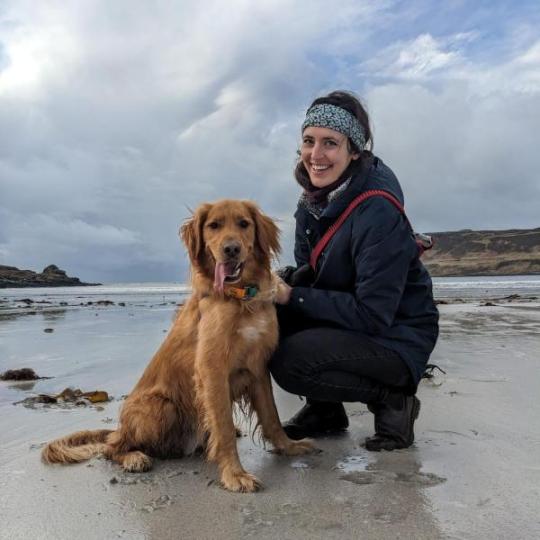
You've been at Stirling for a little over a year now and the sampling campaign as part of the MOT4Rivers project kicked off in September 2023 so we thought this would be a great time to get to know you and your research.
Q: What was your previous education in and where?
Prior to joining University of Stirling for my doctoral research, I completed my Undergraduate programme, BSc (Hons) in Physical Geography at Queen’s University, Kingston, ON, Canada and my Taught Postgraduate studies MSc in Integrated Water Resource Management at McGill University, Montreal, QC, Canada.
Q: You started your PhD in October 2022, what's the doctoral research all about?
I am trying to improve monitoring of sewage pollution in rivers. Sewage pollutes water, spreads illness/disease, and can be harmful to people and wildlife. Across the UK, there is increased awareness and concern about the amount of raw sewage being discharged into waterways. However, given the time, money, and resources required for monitoring discharges, we only have a fraction of understanding about the frequency and impacts of these events.
I am working with the University of Stirling and Scottish Water to advance water quality management with high-resolution monitoring and real-time delivery of data. I am testing the use of optical sensors to constantly monitor microbial pollution. We are trying to find out how well they work, and how the data is impacted by various factors like the sensor’s placement within the river, what the surrounding environment is like, how far downstream it is located from the discharge location, and so on. The results of this research could help improve current understanding of spatial and temporal microbial water quality dynamics in rivers. The end goal of this project is to contribute to better forecasting to protect human health, and better-informed water quality management/interventions to improve surface water conditions. It would cost billions to completely overhaul the wastewater system network, so better monitoring could help target and optimize interventions within budgetary constraints.
Q: What is the role of your doctoral research in the MOT4Rivers project?
Within the MOT4Rivers project, my research is looking at the contributions of the wastewater network into the River Almond catchment; while the larger team is covering all sorts of pollutants and emerging water quality concerns, I am more specifically focusing on the spatial and temporal occurrence of sewage in the catchment.
To do this, I am taking traditional lab-based measurements of faecal coliforms (mainly E.coli) as well as optical sensor readings of samples collected across the River Almond catchment.

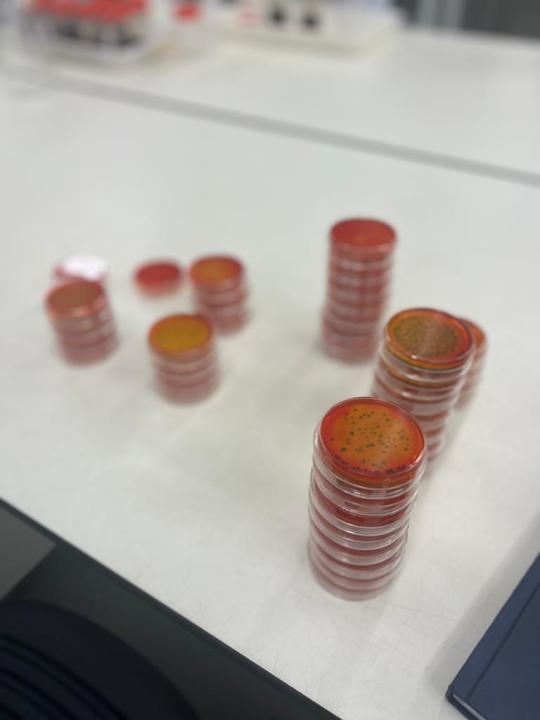
Q: Have you made any interesting discoveries in your doctoral research yet?
It is still early days! In working with technology, I have made some personal discoveries about how to dabble in electrical engineering, but actual data results are still to come!
From a catchment-perspective, I would advise that if you are participating in a litter-pick or river cleanup event, you should definitely wash your hands after…
Q: Do you have a favourite water body and if so, where and what?
That’s a hard one to answer, coming from a country with so much water!!! From top of mind, I would have to say it’s a bit of a tie between Georgian Bay and Lake Huron in Ontario. I spent a significant portion of my childhood along the Bruce Peninsula, and it’s a special place, with soft sandy beaches and beautiful sunsets on the Lake Huron side to the west, and then really cool limestone cliffs and caves with glacial blue waters on the Georgian Bay side to the east.
Q: What got you into water quality science?
I come from an interdisciplinary background, working in water quality and contaminated sites in Canada. I initially got into research doing summer internships during my undergrad. My research internships varied from working as the GIS technician for a children’s cancer research team, to evaluating a potential supplemental drinking water source for the city of Iqaluit, NU.
I really enjoyed the crossover to where research was applied to current events and issues that people cared about. I went on to work in the environmental management of contaminated sites, predominantly focusing on abandoned mine sites in Northern Canada. I really enjoyed the complexity of the work, where you must consider everything from how you’ll control remediation activities to not create a new source of pollution in the area you are trying to clean up, to what vegetation is appropriate to re-establish for the wildlife post-remediation.
I knew that I wanted to build my career as a technical expert, and found myself most drawn to people’s intrinsic emotional, personal, and cultural connections to water. As they say, water is life, and I decided to pursue a PhD which addressed water pollution in some way.
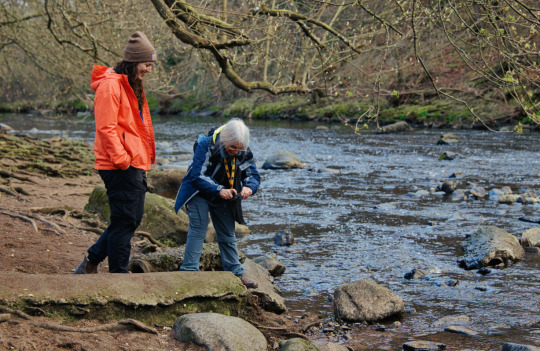

Q: What’s your favourite thing about science?
I think it is really cool that we as humans have systematically established a way to ask a question, figure out a way to get an answer, and find out something new about the world that we didn’t know before.
Q: What do you enjoy about lab work?
I really enjoy the analytical work, where you get to be hands-on in figuring out what is in the water. I enjoy the independence of it, the diversity of the workday, and getting to apply my knowledge to troubleshoot problems.
Having a dynamic workday away from the computer screen is also really nice. However, given the infamous Scottish weather, I do find there are some days where I am grateful that my lab work is indoors…
Q: If you could encourage a younger scientist, what advice would you give them?
Some of my best learning and personal growth has come via failure. It’s part of the process. Embrace it.
Also – you are not your PhD. Personally, I found that gaining work experience before pursuing my PhD has helped me approach my studies with better project management skills and work-life balance. If you can get the opportunity, working in multidisciplinary teams (i.e. working with engineers, biologists, politicians and trades people) will help give you better context of the big picture that your research sits within.
Q: If you could change public perception on one thing in the water industry, what would it be?
No matter what the packaging says, wipes are not flushable! Throw those bad boys in the bin please.
[We totally agree Bridget, for more information on how damaging wet wipes that go down the loo are to our rivers and ecosystems, visit Scottish Water's Nature Calls campaign pages.]
More broadly speaking, I think people often forget that everything that goes down the drain will eventually end up in the river.
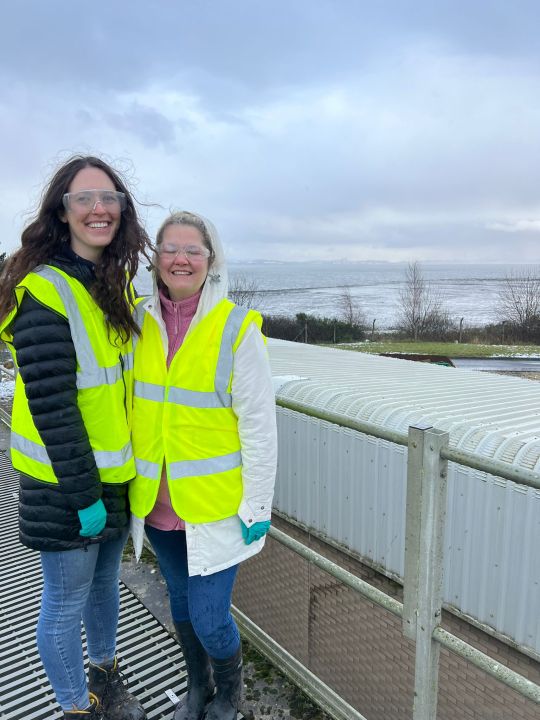
#research#hydronationchair#netzero#scottishwater#phd#waterquality#wastewatertreatment#wastewater#riveralmond#river
0 notes
Photo

Luncheon: Goats Cheese Balsamic Salad with natures finest...water! 😊 #lunch #instafood #glutenfree #goatscheese #salad #health #healthy #water #scottishwater
0 notes
Photo

❤️✨👸💛🍊 This is what the Scots drink! #scottishwater #irnbru
0 notes
Photo

New fave drink #vodka & #sparklingwater #scottishwater #olives #pimentedolives #cleaneating #cleandrinking #healthyeating #healthy #alcohol #cocktail
#vodka#scottishwater#cocktail#healthy#healthyeating#pimentedolives#olives#sparklingwater#cleaneating#cleandrinking#alcohol
0 notes
Text
Boost for emissions reduction as UK tech first deployed by Scottish Water

In July 2023 a ground-breaking new technique for measuring emissions from waste water treatment plants (WWTW) was deployed in Scotland for the first time.
The infra-red tech can pinpoint tiny molecules of emissions from more than two kilometers away, giving experts a detailed read-out of greenhouse gases to allow them to eliminate them more effectively.
Waste water treatment accounts for most of Scottish Water’s emissions. Targets are in place to become operationally net zero by 2030 and achieve full net zero status by 2040.
The use of Grandperspective’s scanfeld® technology is a sector-first in the UK and will revolutionise understanding of gas emissions and transform treatment processes so they become environmentally sustainable. We first reported on the technology and it's potential implementation in October 2022 in our post on our first Process Emissions trial.
Scottish Water operates more than 1800 waste water treatment works in cities, towns and rural communities.
Existing techniques for identifying emissions only allow for localised understanding of emissions. The use of Fourier Transform Infrared (FTIR) technology will allow for a larger area to be scanned for nitrous oxide, methane and carbon dioxide and the role that treatment works play in emitting them.
The solution implemented at a WWTW near Glasgow was identified through the Hydro Nation Chair programme, based at the University of Stirling. Around 200 businesses globally were assessed for their suitability. The HNC Technology programme led by Senior Innovation Fellow David Millar joined forces with Scottish Water’s Net Zero Research and Innovation lead Susan Lee to select the best technology.
David Millar said: “We have selected this technology for trial because it offers a level of granular detail, which we hope will deepen our understanding of emissions from wastewater treatment plants. Identifying, quantifying, and locating the sources of emissions at these plants is vital as we work towards the target of going beyond net zero by 2040.”
Susan Lee said: “This is a great opportunity for Scottish Water to build a deeper understanding of how much we are emitting on a whole wastewater treatment site scale. This work will complement the industry best practice methods we are already adopting to quantify emissions to take steps to reduce them.”
Scotland Hydro Nation Chair Professor Andrew Tyler said: “This is an exciting milestone. This UK and sector first deployment of Grandperspective’s scanfeld® solution will enhance our understanding of greenhouse gas emissions from waste water treatment processes and establish a baseline against which we can assess change.”
George Ponton, Head of Research and Innovation at Scottish Water said: “The Hydro Nation Chair programme was established to bring thought leadership, research excellence and innovative solutions from Scotland and beyond, focused on addressing the key challenges facing the water sector in Scotland.”
Peter Maas, Chief Technology Officer, Grandperspective, said: “We eagerly anticipate the results of Scottish Water's scanfeld® deployment. The technology's potential to drive sustainability and facilitate emissions monitoring is truly promising. I am excited to support Scottish Water's journey towards a greener future."
0 notes
Photo

Just touched down in #Glasgow and its pissing it down! :( #sun where are you? #scotland #standardscottishweather #rain #scottish #scottishwater #greysky #overcast
0 notes
Text
Site Visit: First Process Emissions Trial

On 17th Oct 2022, Senior Innovation Fellow, David Millar ventured out on site at Scottish Water for the First Process Emissions Trial. Find out more about the trial and what it means in David’s blog.
My role within the Hydro Nation Chair R&I programme, as a senior Innovation Fellow is to help build the technological capability of Scottish Water so they can transition beyond Net Zero by 2040. No easy task on both fronts.
Technology is not the only answer to the Net Zero challenge, but it will certainly be a key enabler.
Behind the scenes I am busy building a transformational start-up support offering which will launch in 2023. This programme aims to support start-up companies and provide the necessary, one-stop shop of resources to help them survive and thrive. However, technological solutions don’t always have to be new, there are many technologies and developments already in existence that can be applied to the water sector and support Scottish Water’s realisation of their Net Zero ambitions. To that end, I have also been busy scouting the globe for existing technology aligned to our four core missions (Process Emissions, Infrastructure Emissions, Circular Economy and Enhancing the Natural Environment). Such scouting activities are called Horizon Scans and involve desktop searches of various resources, such as investor portfolios, conference agendas, personal networks and online platforms that monitor new technology start-ups from around the world. Some good old Google searches also came in useful.
From my Horizon Scan, I identified and made contact with over 180 technology business, offering an array of technologies that could be useful. Together with Programme Managers from Scottish Water, these 180 opportunities were then rigorously assessed and we have now selected a handful to take to field trial across the Scottish Water network.
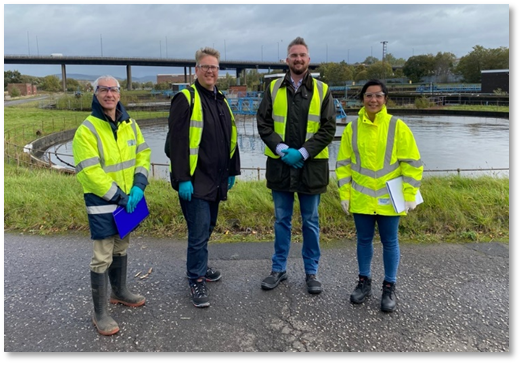
On 17th Oct 2022, we reached a milestone in this process with our first technology provider, Grandperspective, visiting from Germany to scope out the Laighpark wastewater treatment works near Paisley. The site visit involved Gerd from Grandperspective; Susan Lee (Scottish Water’s Net Zero Progamme Lead); Chris Bonnington (Scottish Water Project Manager); myself and Laighpark Operations technicians and electrician.
We were met in Paisley with the fairly standard mix of very windy, chilly and wet weather, to which Gerd from Grandperspective noted “you certainly get some interesting weather around here!”
Most process emissions sensors are based around commonly used Nondispersive InfraRed (NDIR) Spectroscopy. This technology requires the gas needing measured to enter a sample chamber before it can be analysed. For open plan facilities, such as wastewater treatment plants, this methodology can prove difficult to analyse whole site emissions due to the influence of wind, weather and the potential that gases of interest don’t do as their told and enter the sample chambers when needed. To get effective and reliable measurements, you would also require a considerable number of sensors across the site.
Grandperspective offers something more innovative called Scanfield, which is based upon a different technology called Fourier Transform Infrared spectroscopy (FTIR).
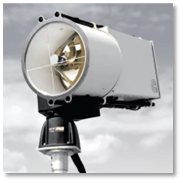
FTIR offers considerable advantages over NDIR – for example, one single device can monitor over 200 substances up to a range of 2km and at concentrations of parts per million (ppm).
FTIR enables such monitoring by measuring the infrared spectrum of absorption or emission of a solid, liquid, or gas. A mathematical process called a Fourier transform is required to convert the raw data into the actual spectrum – hence the name Fourier Transform Infrared spectroscopy (FTIR).
Pretty amazing technology and exactly the sort we need to better understand the emissions profiles associated with wastewater treatment works.
The purpose of the visit to Laighhill Park was to identify exact locations and line of sight for the device in order to monitor as much of the site as possible.
Next steps are to finalise the work packs for the instal and get ready to kick start our first technology trial under the Hydro Nation Chair R&I programme – super exciting stuff.
This site visit is one of many to come and I hope you will join us on this journey.
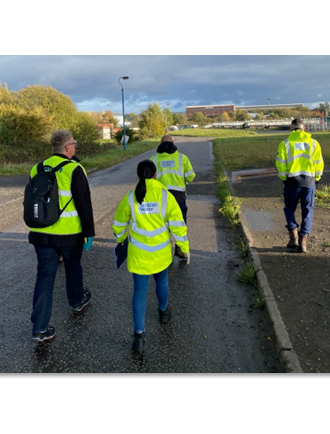
#innovation#horizonscan#scottishwater#wastewatertreatment#research#technology#netzero#sitevisit#processemissions#sensor#sensortechnology
0 notes
